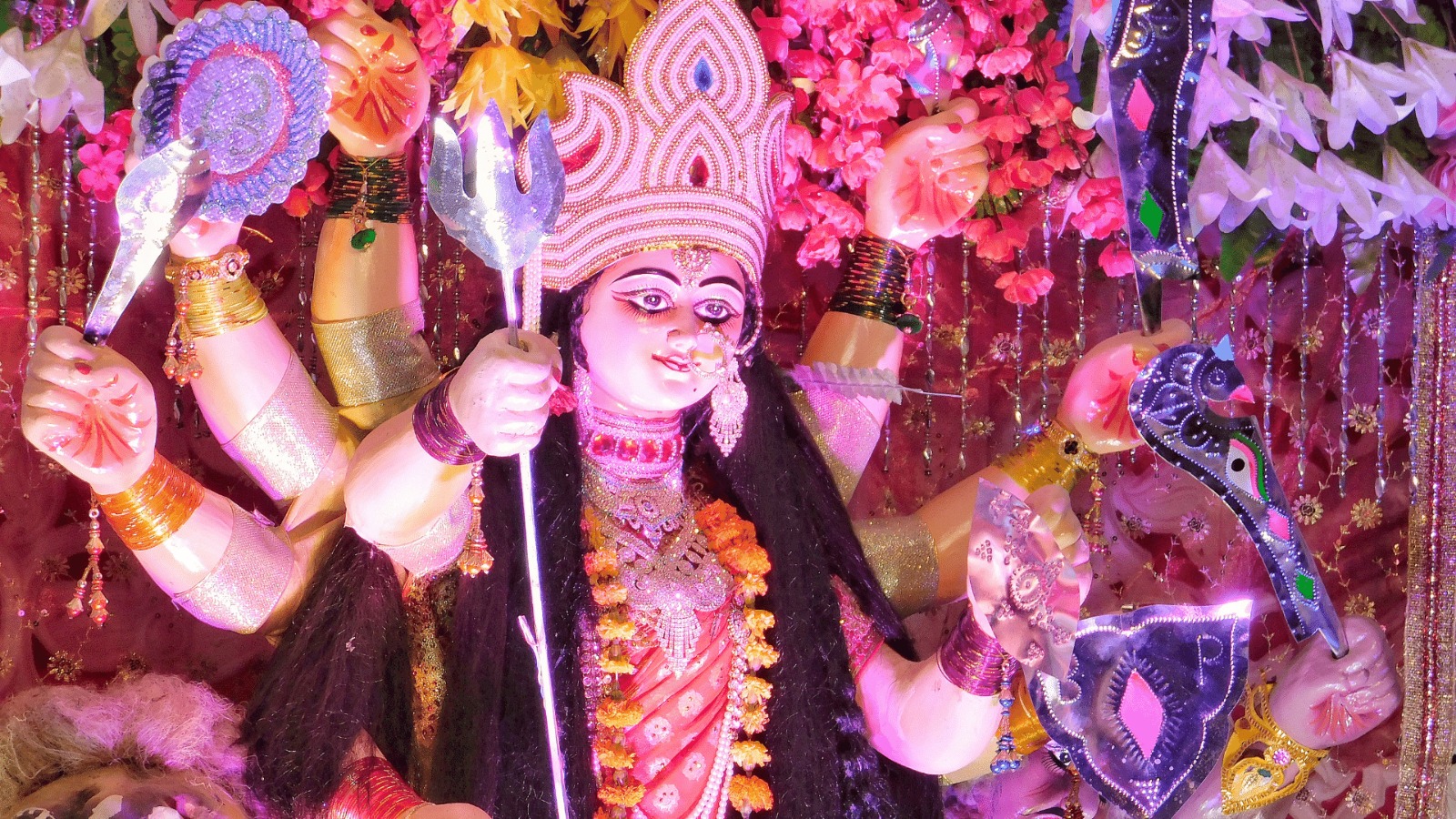Blog
Unlocking the Cosmic Significance of Navratri: A Celestial Journey through the Nine Nights
Author: Astrologer
Category: Astrology
Posted on: Apr 09, 2024

Introduction
Welcome to the celestial saga of Navratri, a profound celebration that illuminates the cosmic tapestry with its vibrant hues and sacred rhythms. Rooted in the rich tapestry of Hindu mythology and astrology, Navratri stands as a testament to the eternal dance between light and darkness, good and evil, creation and destruction. As we embark on this mystical journey, we delve deep into the celestial realms, exploring the profound astrological significance that underpins this auspicious festival. Join us as we unravel the cosmic mysteries and unlock the hidden wisdom encoded within the nine nights of Navratri.
Also read - Exploring Ancient Wisdom of Vedic Astrology and Palmistry
The Celestial Symphony of Navratri
Navratri, meaning "nine nights" in Sanskrit, marks the triumph of good over evil and celebrates the divine feminine in all her myriad forms. This sacred festival unfolds over nine nights and ten days, dedicated to the worship of Goddess Durga and her nine divine manifestations, known as the Navadurga. Each night of Navratri is imbued with the celestial energy of a specific deity, symbolizing the cosmic journey of the soul towards enlightenment.
The celestial symphony of Navratri is orchestrated by the movements of the planets and stars, weaving a tapestry of cosmic vibrations that resonate with the rhythms of creation. Astrologically, Navratri occurs during the transition of seasons, aligning with the equinoxes and solstices, signifying a period of profound cosmic balance and harmony.
The first three nights of Navratri are dedicated to Goddess Durga in her fierce form as Shailaputri, Brahmacharini, and Chandraghanta, representing courage, purity, and serenity, respectively. These nights are governed by the energies of Mars, Venus, and Jupiter, igniting the fire of transformation and purification within the soul.
As the celestial dance unfolds, the next three nights honor Goddess Durga in her ferocious forms as Kushmanda, Skandamata, and Katyayani, symbolizing abundance, motherhood, and divine power. These nights are governed by the energies of the Sun, Moon, and Mars, illuminating the path of spiritual growth and self-realization.
Chat here: Chat with astrologer online
The final three nights of Navratri are dedicated to Goddess Durga in her compassionate forms as Kaalratri, Mahagauri, and Siddhidatri, embodying fearlessness, purity, and divine blessings. These nights are governed by the energies of Saturn, Rahu, and Ketu, guiding the soul towards liberation and enlightenment.
As we continue to reflect on the celestial significance of Navratri, let us delve deeper into the astrological nuances that shape this sacred festival. The alignment of the planets during Navratri holds profound symbolism, reflecting the cosmic dance of the divine and offering spiritual seekers an opportunity to align with the higher frequencies of the universe.
The planetary influences during Navratri are not merely coincidental but are intricately woven into the fabric of the cosmos, guiding humanity towards spiritual awakening and inner transformation. Each deity worshipped during Navratri is associated with specific planetary energies, signifying the divine interplay between celestial bodies and earthly manifestations.
For instance, the first night of Navratri, dedicated to Goddess Shailaputri, coincides with the influence of Mars, the fiery planet of courage and determination. As devotees invoke the blessings of Goddess Shailaputri, they harness the dynamic energy of Mars to overcome obstacles and embark on the journey of self-discovery.
Similarly, the second night of Navratri, honoring Goddess Brahmacharini, aligns with the gentle influence of Venus, the planet of love and devotion. Devotees immerse themselves in the soothing vibrations of Venus, cultivating purity of heart and unwavering dedication to the divine.
As Navratri progresses, each deity and their corresponding planetary energies guide seekers through the spiritual labyrinth, offering insights into the cosmic mysteries and empowering them to transcend the limitations of the material world.
The celestial dance of Navratri culminates with the victory of light over darkness, symbolized by the tenth day known as Vijayadashami or Dussehra. On this auspicious day, devotees celebrate the triumph of good over evil, culminating in the destruction of the demon king Ravana by Lord Rama.
Astrologically, Vijayadashami marks the culmination of the celestial energies unleashed during Navratri, propelling humanity towards spiritual victory and divine grace. It is a time of profound significance, heralding new beginnings and the triumph of righteousness in the cosmic drama of existence.
Conclusion
As we conclude our celestial journey through the nine nights of Navratri, we are reminded of the eternal truths encoded within the fabric of the cosmos. Navratri serves as a sacred reminder of the cyclical nature of existence, where light emerges from darkness, and divine grace reigns supreme. Through the lens of astrology, we gain deeper insights into the cosmic forces at play during this auspicious festival, unlocking the hidden wisdom that lies within.
May the celestial energies of Navratri inspire us to embrace the divine within and embark on the journey of self-discovery and spiritual evolution. As we offer our prayers and invocations to the divine goddesses, may we be blessed with strength, wisdom, and inner peace. Let us rejoice in the glory of Navratri and surrender to the cosmic dance of creation, knowing that we are guided and protected by the celestial forces that govern the universe. Jai Mata Di!
Have any questions? Speak with an astrologer: Download the App Now






 SIGN IN WITH GOOGLE
SIGN IN WITH GOOGLE